Defence
10 Para Special Forces: Celebrating 50 Raising Days
Sumit Walia
Jun 04, 2017, 05:44 PM | Updated 05:43 PM IST
Save & read from anywhere!
Bookmark stories for easy access on any device or the Swarajya app.
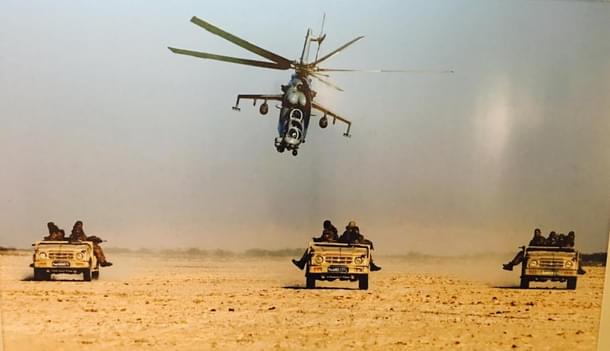
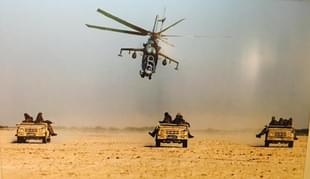
`Mussoorie main honeymoon manane walon ko pata chale ki IMA mein loha ban raha hai`
This is one of the many punch lines that drill instructors of the Indian Military Academy (IMA) frequently use to encourage and push Gentleman Cadets, who would go on to become officers of the Indian Army. Now, this may well be true and they would be making loha there. But the real steel is casted somewhere else – in the Special Forces (SF) battalions of the Indian Army.
Special Forces units are one of the most ruthless, dangerous and determined soldiers on Earth – men of steel, with immeasurable physical and mental toughness. They are just 4,500 selected men out of the 1.25 million-strong Indian Army. Why so less? As there is no recruitment rally for any of the 10 Special Forces battalions, because each one of them (jawans and officers alike) is a volunteer from other units of the Indian Army. Also because 90 per cent of the candidates, who volunteer for SF fail during probation, and those who finally join the SF units are “men apart, every man an emperor”.
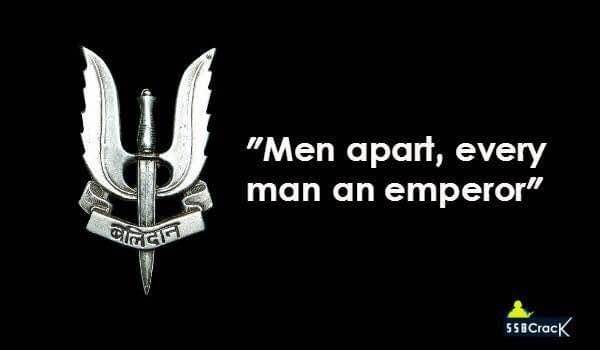
My first encounter with SF was in Agra way back in 2001. During a dinner, one of my friends, who had just passed out of IMA, asked then Major Rajesh Shyoran, Sena Medal of SF, “Sir, just like you, I want to earn the Maroon Beret and ‘Balidan Badge’. How should I proceed?” With a smile on his face, Major Shyoran simply said, “you are very welcome to try”. When my friend insisted, Major Shyoran said, “See, it is simple. Either you have it in you or you don’t. Agar tumhara dil, dimag aur ghutna ek line main hai, you can make it”.
I was quite surprised and when I asked again, Major Shyoran explained, “Dil – we need men with extraordinary courage and spirit of camaraderie, who are willing to accept any challenge under any circumstances. Dimag – we need men with undying spirit, who refuse to give up – no matter what, men who are mentally so robust that they keep pushing their breaking point to the next limit every time. You are out of the race the moment you show your breaking point during the training or probation. Ghutna – men with great physical strength and endurance, who can endure unimaginable hardship, who can keep running with full battle load for miles even when the body refuses to – without food, water or rest.”
That is where my interest in SF grew, but nothing much was (and still is) available in public domain because everything related to them – their training, weaponry, tactics, missions, capabilities etc is shrouded in secrecy. Using my memory and few sources, I am writing this tribute to the 10 Para (SF) battalion which celebrated its golden jubilee on 1 June 2017.
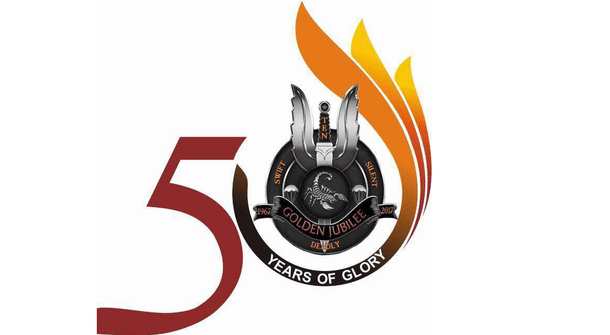
Making Of A Scorpion
As per the process, any officer who is eager to earn the Maroon Beret must write to the Commanding Officer (CO) of the SF unit, he wishes to join. After his request is accepted, the candidate officer goes through six months of probation. During this time, he undergoes one of the toughest training procedures in the world.
10 Para (SF) are also known as Desert Scorpions. Officers and jawans opting for 10 Para (SF) are trained specially for desert warfare. At the start of the probation, they are given a tent, a bucket, a knife, a rope and a laltain (lantern). They have to set up their tent in the desert. They undergo rigorous physical training day and night with no specific routine as there is no specific training manual. They get trained, sometimes, without food for four days, one litre of water for three days, and without sleep for seven days. Sleep deprivation sometimes starts the moment probation kickss in. The trainee will always have a 10kg sandbag on his back – this sandbag is affectionately called permanent buddy. The objective is to make the candidate realise that he is far more capable than he ever imagined. The moment he shows any weakness, he is out.
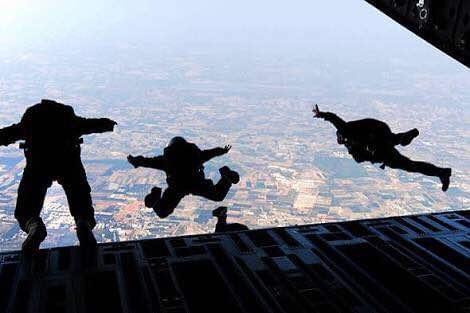
Every month he has to complete 10km, 20km, 30km and 40km speed walk with full battle gear which would mean an additional 25kg. These speed walks should be completed within stipulated time.
Scorpions are better navigators than the modern global positioning systems (GPS). In the desert, there are no roads or landmarks and not much human presence. There are just sand dunes that keep shifting every night. In such vast and clueless place, they are halo/air dropped in the middle of nowhere, with just a compass in their hands. By using that compass and stars, they reach their destination without fail, every time. They are taught to survive with literally nothing to eat or drink. They collect dew in the wee hours to survive. Just 300ml of water is good for them to survive for two days. Remember it is 50+ degrees in Thar and a normal human needs more than 10 litres a day to survive. They are taught to eat anything that moves in the desert area. They specially like eating scorpions – “Once you kill and roast it, remove its venom, it is really tasty”. They know which grass, which leaf, which shrub to eat to stay alive and complete the mission – because the battle is not won by dying for your country but to kill the enemy.
During the six-month probation period, no candidate gets rejected because 90 per cent of them give up and go back to their respective units. Before declaring any candidate fit for the unit, the CO would consult the probation officer of the candidate, other officers, Subedar Major, Junior Commanding Officers and even Jawans. This might sound odd but it is very important as the whole unit is a one big close-knit family, where every soldier trusts his brothers-in-arm with his life. It is not easy to earn that Maroon Beret, apart from physical and mental toughness, one has to have the camaraderie to prove his worth.
Here comes the fun part. When an officer is selected, the CO and other officers will bring the Maroon Beret placed in the oldest trophy won by 10 Para. Trophy will also be filled with drinks – it could be whisky, rum, beer, juice or a mix of all. The candidate will have to drink all of that, empty the trophy and wear his Maroon Beret himself. No one will put the Maroon Beret on his head because, as they say in the SF units, he has earned it. Then during the dining-in ceremony, after finishing his first drink, the candidate officer will have to break a piece of his glass, chew it till it becomes (almost) sand and gulp that down with some more whisky. Showing true camaraderie, all other officers do the same.
The candidate would not earn the famous Balidan Badge, just because he has earned the Maroon Beret. He will have to undergo Para training in Agra to earn the Para Wing badge and then wait for his first successful operation to earn the Balidan Badge – it symbolises sacrifices one has made on the battlefield.
After the probation, they undergo specialised training at Special Forces Training Centre, where they are trained for weapons, communications, navigation, medical and demolition. These five segments of training are crucial because during any mission, it would be a team of minimum five commandos. The team is designed in such a way that each member has completed this training as his primary and secondary skills, thereby no dependency on any one person for any task.
10 Para (SF) are specially trained for operations in desert – from the lower border of Punjab till Gujarat. But make no mistake they are always ready to take on any task, anywhere. They make their frequent trips to Jammu and Kashmir with 10 SF teams among the first to go up the Kargil Hills and bring back information about the scale of intrusion.
Like Liberation Tiger of Tamil Eelam (LTTE) in Sri Lanka the terrorists in J&K fear SF units because they know that these guys will wait for them forever sitting still, for days, in the rain, dew or ice, with or without food and will not go home without capturing the terrorists dead or alive.
During a covert operation, disguised as brainwashed Kashmiris/jihadi Pakistani, Maj Sangram Singh (Shaurya Chakra) and Capt Vikas of 10 Para (SF) stayed with Lashkar-e-Taiba (LeT) terrorists in their camp in a jungle for four days. During this operation, they gathered tremendous amount of information and killed four terrorists. Indian Army broke down LeT network using that information. The militants were so terrorised that they were always on the run thereafter.
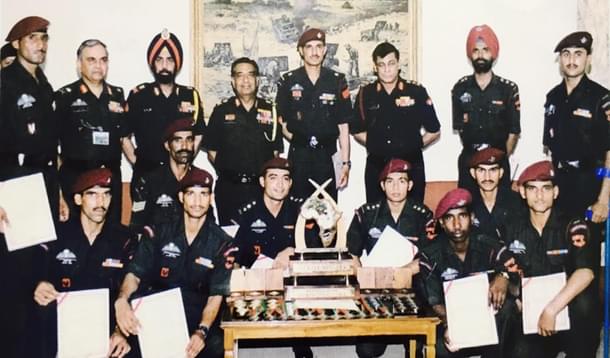
Their Glorious Past
It was raised in 1967 by splitting 9 Para (SF). Within four years of its raising, it took part in the 1971 war and conducted one of the most successful commando operations in the world – the Chachro Raid. This operation is a case study in the US Special Forces and UK Special Forces – SAS. Under the leadership of the legendry Lt Col Swai Bhawani Singh (Maharaja of Jaipur), 10 Para (SF) prepared for this raid for six months. And just like a trained medical doctor who cuts open a patient’s body layer by layer, 10 Para (SF) captured town after town and handed them over to regular units of the Army – a surgical strike in a literal sense.
So thorough and accurate was the planning, preparation and execution that 10 Para (SF) captured Chachro, Virawah, Nagarparkar, Islamkot and Lunio without a single causality. The enemy lost 36 men and 22 were taken as Prisoners of War. For this successful operation, 10 Para (SF) received a well-deserved Battle Honour – Chachro 1971 and received 10 gallantry awards while the CO, Lt Col Bhawani Singh, received Mahavir Chakra.
Later in 1987, 10 Para (SF) was a part of the Indian Peace Keeping Force in Sri Lanka. The commanding officer was Col Dalvir Singh (Veer Chakra), who was known as “Saint Soldier”, as he was as humble as a saint and as ferocious a soldier as a Para Commando should be. He would eat all three meals of the day with his soldiers – every single day, not in any officer’s mess but with the soldiers he commanded, in their kitchen.
LTTE was so terrorised by 10 Para (SF) that ADC to LTTE chief Prabhakaran confessed to my source that “there is only one unit that we fear the most – Saint Soldier’s unit”. These were the words he used to describe the CO and his paltan. One can imagine the respect 10 Para (SF) had earned.
While working on my article on the President’s Bodyguards, I visited the Rashtrapati Bhawan a number of times. During a function, I noticed the Balidan Badge worn by one officer of the President’s staff. That officer was Major Varun Chabra of 10 Para (SF), who was ADC to the President. Out of curiosity, I met the officer and spoke about his unit. I mentioned Lt Col Chabra, who was martyred in Sri Lanka. We kept talking for 10-15 minutes and then I took my leave. When I turned around, he stopped me and said, “Sir, Col Chabra was my father. I was determined to follow in his footsteps and join his paltan”. He left me speechless as we shook hands again.
Like other SF battalions, 10 Para is also a master of every field. They have produced excellent sportsmen. At a dinner, an officer from Garhwal Regiment taunted Col Bhupesh Hada (Shaurya Chakra) of 10 Para (SF) “you guys would be king of desert but mountainous region is a different ball game”. Col Hada took it in the true Para spirit and gave a fitting reply by conquering Mount Everest within six months. He had not done mountaineering before that. It took him just six months to move from the Thar Desert to the 8,848 metre high peak. It speaks volumes of the spirit and physical/mental toughness of Col Hada.
Maj Surendra Poonia, VSM of 10 Para (SF) is another such example. He is amongst the youngest recipients of the Vishist Seva Medal. He also received four COAS commendation cards for distinguished service in the field and in sports. An exceptionally good sportsman, he participated in World Medical Games between 2010 and 2015 and won 27 medals (11 gold, 12 silver and four bronze). He did it all by himself with no support from anywhere.
In 2002, 10 Para (SF) was given three days’ notice to prepare for World Special Forces competition. Under the command of Capt Virendra Salaria (Shaurya Chakra) and Capt T R Krishna Das (Sena Medal), a small team from 10 Para (SF) participated and won the competition for India after beating special forces from the US, the UK, France, Russia etc. In 2004, they again participated and bagged the silver medal.
This list can go on and on but most of them will not talk about their missions. Every SF soldier carries so many stories to narrate and leaves a legacy behind. At the end, I remember what Maj Surendra Poonia of 10 Para (SF) said in a seminar in New Delhi in 2012. When a student asked him “Don’t you guys fear? All these risky operations are so dangerous.You can get killed. What moves you to do the unthinkable?”
Major Poonia’s reply left everyone speechless when he said, “Everyone fears but the love for our country and countrymen; izzat, honour, pride of the paltan and brotherly support of our fellow brothers-in-arm leave that fear far behind. Our training has made us so confident that when we face any challenge, we don’t think about the hurdles, our mind starts thinking about how to accomplish the mission. There is simply no room for fear.”
I regret that I could not join the Indian Army. While researching for this article, I was thrilled and desperately wanted to go back in time to give it another shot. I suggest every youth reading this tribute to try joining the Special Forces and see if you have it in you, if you have that steel inside you, if your dil, dimag and ghutna is in a line. See if you are a man apart, a man worthy of being an emperor.





